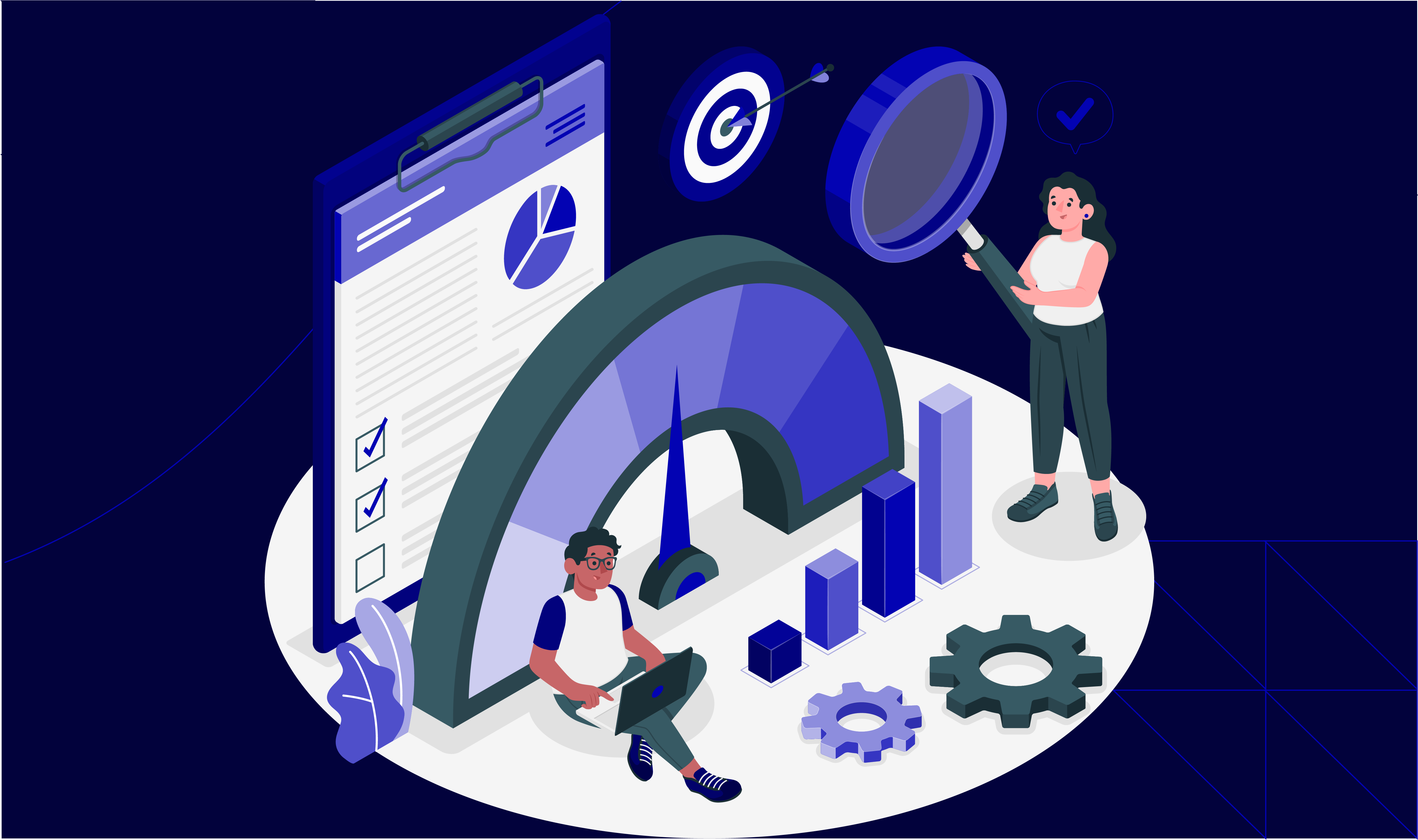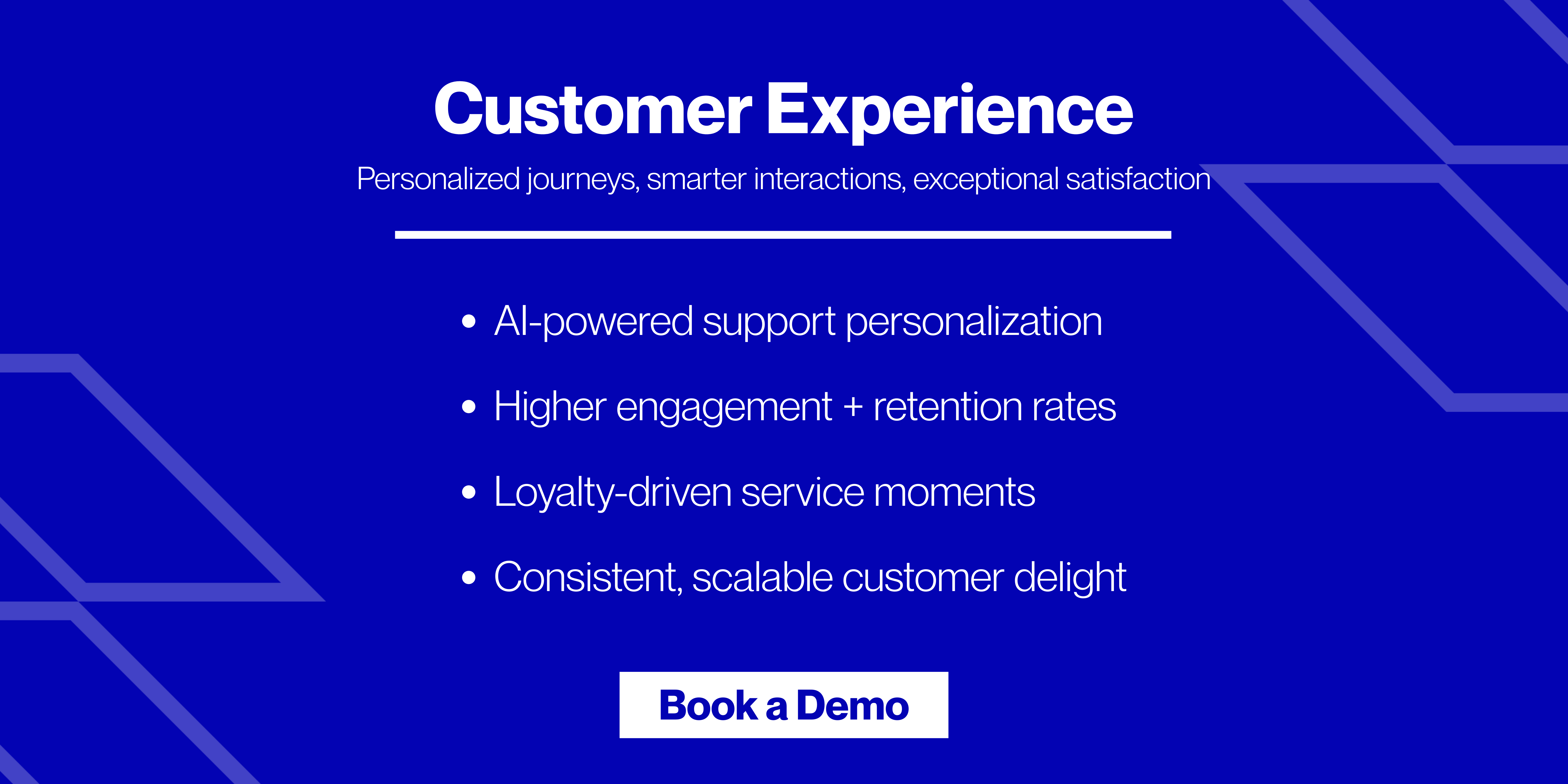Customer Effort Score (CES) is a way to measure how easy or difficult it is for customers to do business with you. To collect the required information, you run a CES survey. It asks customers to rate your support services on a scale from 1 (very difficult) to 7 (very easy). A high CES score means customers find it easy to work with you, while a low score means they are struggling.
For VPs, Senior Managers and Directors at consumer brands and D2C companies in the US, UK & Australia, CES is a customer experience (CX) metric that predicts loyalty, retention and long-term revenue growth.
Research shows that 96% of customers who have a hard time getting help or solving a problem become disloyal. Such unhappy customers not only stop buying from you, but they also tell others about their bad experiences. This can significantly hurt your business.
To understand how your customers feel, you as a business owner often use surveys. One type of survey is the customer effort score (CES). It focuses on how much effort a customer has to put in when interacting with your business. Other types of surveys, like Net Promoter Score (NPS), measure loyalty, but CES is specifically about how easy it is for customers to get what they need.
So, do you want to improve customer service and keep people coming back? In this article, let’s understand what customer effort score is, its calculation, and how to improve it.
What is the Customer Effort Score?
Customer effort score is a way to measure how easily your customers can do business with you. It focuses on how much effort a customer has to put into:
- Solve a problem
- Buy or return a product
- Get an answer to a question
Usually, you collect this information through a CES survey. It asks customers one question:
“How easy was it to interact with your business?”. Next, customers answer on a scale, from “very easy” to “very difficult.”
Gartner research confirms that CES is one of the strongest predictors of customer loyalty and customers who report “easy” experiences are 94% more likely to repurchase.
This metric is important because customer churn (losing customers) is a big challenge for businesses. If customers struggle to get help or complete a purchase, they may stop buying from you.
By calculating the customer effort score, you can track customer frustration and resolve issues before losing business.
How to Calculate Customer Effort Score?
You can calculate customer effort score by asking customers a simple question:
“How easy was it to solve your issue today?” or “How easy was it to interact with your business?”
Next, customers give a rating on a number scale (usually 1 to 5 or 1 to 7). You average these ratings to find out the customer effort score. A low score means they struggled, while a high score means they had an easy experience.
For more clarity, let’s have a look at some easy steps to calculate customer effort score:
Step I: Collect Survey Responses
Ask customers to rate their experience using a number scale. Some businesses use:
- 1 to 5 scale (1 = very difficult, 5 = very easy)
- 1 to 7 scale (1 = very difficult, 7 = very easy)
The higher the score, the better the experience.
Step II: Use the Formula to Find Average
To find your customer effort score, use this simple formula:
Customer Effort Score (CES) = (Total sum of all scores ÷ Number of responses)
For example,
- Let’s say you run a CES survey.
- You made your customers rate on a scale of 1 to 7.
- You received 100 responses.
- The total score from all responses is 550.
- Now, your Customer Effort Score (CES) = 550100 = 5.5
Here, a higher CES score is closer to the maximum, which in this case is 7 (the highest a customer can rate).
Other Ways to Calculate Customer Effort Score
Apart from the above approach, some businesses also use these ways to find the customer effort score:
| Emoticon Scale | Likert Scale (Strongly Disagree to Strongly Agree) |
|
|
Many enterprise CX leaders prefer the Likert scale, as it aligns CES with other metrics like CSAT and NPS, making comparison easier.
How to Improve Your Customer Effort Score?

One of the best things about CES is that it’s quick and easy for both customers and businesses. Customers can answer the survey in seconds, and you can use their feedback to make improvements.
It also helps you see trends over time. If your customer effort score goes up, it means your service is getting better. A study found that companies determined to boost CX reported an 80% increase in revenue. According to Harvard Business Review, reducing customer effort is more correlated with loyalty than delighting customers.
Let’s check out some proven ways to improve your CES:
1. Provide Multiple Ways for Customers to Contact You
Not all customers prefer the same method of communication. Some may like to call, while others prefer email, chat, or social media. If a business only offers one way to get support, it may be frustrating for customers who are not comfortable with that option.
For example,
- Say your business only accepts orders over the phone. Now, some customers may find it difficult to call during busy hours. If you introduce WhatsApp and a simple online order form, your customers can choose the method that suits them.
By providing multiple contact options, you make it easier for customers to reach out in a way that feels natural to them. Below are some popular options you can offer:
- Phone support for urgent issues
- Email support for detailed queries
- Back office support services
- Live chat for quick questions
- Social media support for public inquiries
- In-person support for local businesses
Looking for an omnichannel CX specialist? We at Atidiv can offer your customers 24/7 support through different methods like phone, email service outsourcing, chat, social media, and in-person support. No matter when or where a customer needs help, they can reach out through their preferred method!
Omnichannel accessibility is essential for consumer brands and D2C businesses. Atidiv ensures 24/7 availability across voice, email, chat and social media to reduce effort for global customers.
2. Offer Self-Service Tools
Many customers prefer to solve problems on their own. According to a recent survey, it was found that about 67% of customers indicated a preference for self-service options over speaking directly to a customer service agent.
By providing self-service options, you allow your customers to get the information they need without extra effort. This reduces frustration and increases customer effort score. Check out the list below to learn about some useful self-service options:
| Self-service options | Meaning |
| Frequently Asked Questions (FAQs) | A list of common customer questions with answers. |
| Help Articles/ Knowledge Base | Step-by-step guides for solving common problems. |
| Automated Chatbots | Instant responses to basic queries. |
| Online Order Tracking | Allows customers to check their order status without calling. |
McKinsey research shows that 70% of customers expect a company’s website to include self-service applications.
3. Reduce Wait Times for Customer Support
Customers do not like to wait for long periods! If they are placed on hold for too long or do not receive a quick response to their emails or messages, they may feel frustrated.
Always remember that long wait times make customers feel that their time is not valued. This lowers the customer effort score.
For example,
- Say you run a travel agency in India. You receive too many calls during the holiday season. During these times, your customers wait a long time to speak to an agent. This causes frustration and some customers may book with another agency instead. With hospitality call center outsourcing, you can easily manage seasonal spikes, reduce wait times, and ensure every customer gets timely assistance.
To reduce wait times, your business should do the following:
- Use a callback system, where customers can request a call instead of waiting on hold.
- Hire extra staff during busy hours to handle more customer requests.
- Offer chat support for quick questions, so not all customers need to call.
- Provide self-service tools, so customers can find answers without waiting.
Forrester reports that reducing average wait time by even 1 minute can improve CES by up to 15%.
4. Follow Up with Unhappy Customers and Make Improvements
If a customer has a bad experience, you must try to understand what went wrong. Following up with unhappy customers shows that the business cares about their concerns and is willing to improve.
For example,
- Say you run a restaurant. You receive a low customer effort score because customers find it hard to make reservations. Now, you should reach out to those customers and ask for more details. If customers say the phone line is always busy, you can introduce an online booking system to make the process easier.
To follow up with unhappy customers, you follow these techniques:
- Calling or emailing them to ask what went wrong.
- Offering a solution to resolve their issue.
- Apologising and showing that their feedback is valued.
In addition to following up with individual customers, you should look at overall survey results. While observing, try to find common problems. For example,
- Say many of your customers give a low customer effort score. That’s because the checkout process is confusing. Now, this is a sign that the system needs improvement.
By making the necessary changes, you can boost CX and also the customer effort score.
Proactive follow-ups show strong customer service leadership which is a key driver of CES improvement for VP and Director-level CX leaders.
Turn Your Customers Into Loyal Fans With Atidiv!

By calculating the customer effort score, you can understand how much stress your customers undergo while doing business with you. Always remember that a low CES can result in lost customers and negative word-of-mouth.
Thus, to improve CES, you can:
- Offer multiple contact options
- Provide self-service tools
- Reduce wait times
- Follow up with unhappy customers
Looking to partner with a CX specialist? We at Atidiv can help you realise long-term benefits, like higher retention and revenue growth. By analysing metrics like Average Handling Time (AHT), First Call Resolution (FCR), and customer sentiment, our experts at Atidiv help businesses optimise workflows and improve service quality.
For consumer brands and D2C companies in the US, UK & Australia, Atidiv delivers measurable CES improvements, higher CSAT and stronger loyalty. Our proven record includes helping the largest U.S. online tire retailer save $1.3 million annually while managing over 360,000 tickets a year.
FAQs on Customer Effort Score (CES)
1. Why is my Customer Effort Score low?
A low CES means customers find it hard to do business with you. This could be due to:
- Long wait times
- Complex processes
- Poor customer support
To resolve it, you can offer multiple support options and try to reduce response times. Also, you can provide self-service tools like FAQs and chatbots.
2. How often should I measure CES to see real improvements?
You should measure customer effort scores regularly. Ideally, you should calculate it after every key interaction, such as:
- Support call
- Product purchase
Also, make a quarterly or monthly review to identify trends and make better business decisions. Leaders in CX typically run CES surveys post interaction and implement insights monthly or quarterly to identify trends.
3. My business is small. How can I improve customer effort score without spending too much?
You can begin with simple steps:
- Create a clear FAQ page
- Enable WhatsApp or email support
- Reduce long wait times with a callback option.
Additionally, even small changes, like training staff to give quick and clear answers, can make a big difference in customer satisfaction.
4. How do I know which part of my business is causing a low CES?
To identify the problem areas, you should look at customer feedback and survey responses. This observation will help you find patterns, such as:
- Are customers complaining about long wait times?
- Is it difficult for customers to initiate returns?
- Are your agents rude on support calls?
Alternatively, you can outsource customer support to specialist agencies like Atidiv. We use data-driven insights to track issues in Average Handling Time (AHT) and First Call Resolution (FCR). This allows us to pinpoint problem areas.

